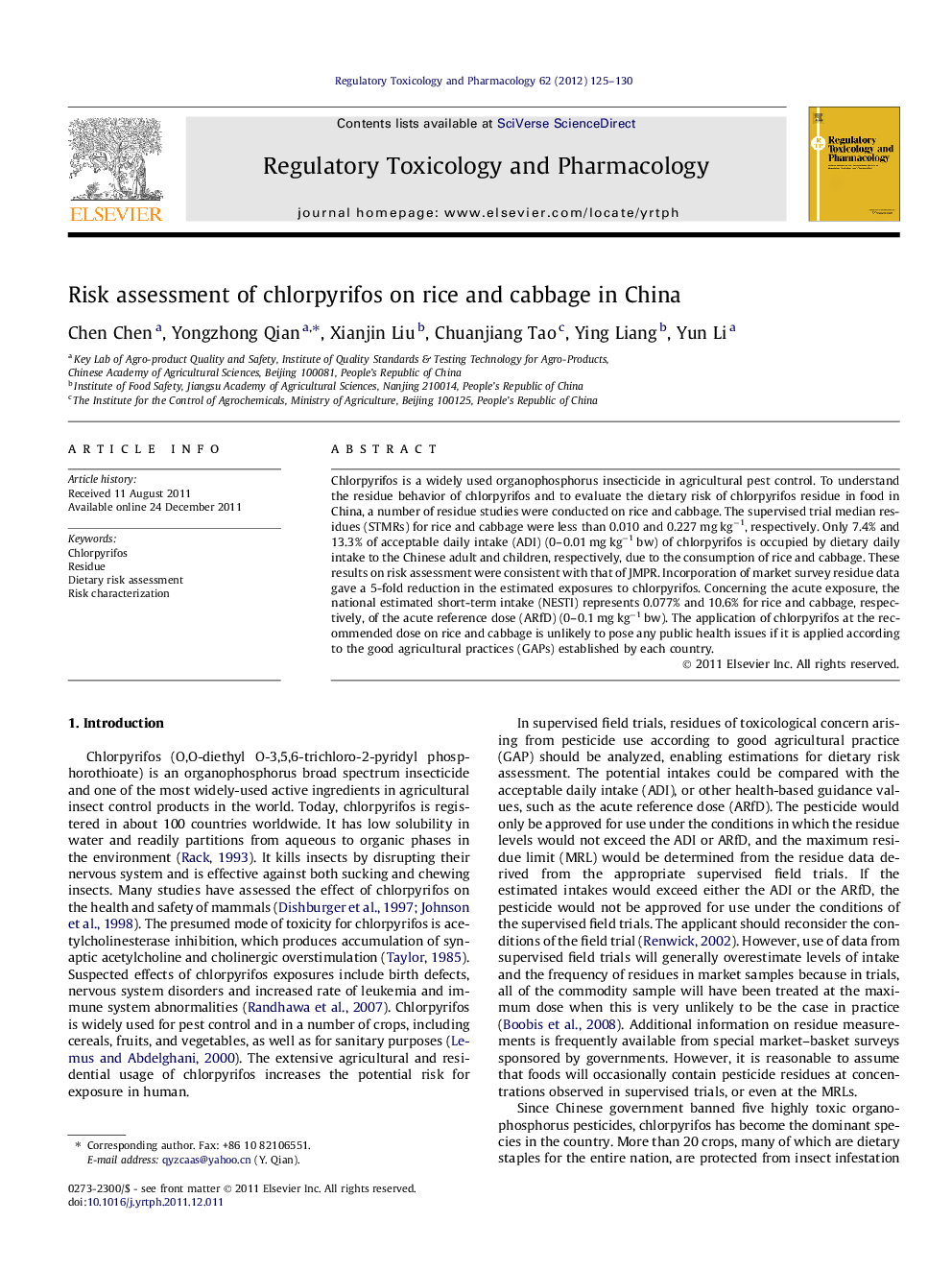| کد مقاله | کد نشریه | سال انتشار | مقاله انگلیسی | نسخه تمام متن |
|---|---|---|---|---|
| 5857839 | 1132034 | 2012 | 6 صفحه PDF | دانلود رایگان |

Chlorpyrifos is a widely used organophosphorus insecticide in agricultural pest control. To understand the residue behavior of chlorpyrifos and to evaluate the dietary risk of chlorpyrifos residue in food in China, a number of residue studies were conducted on rice and cabbage. The supervised trial median residues (STMRs) for rice and cabbage were less than 0.010 and 0.227 mg kgâ1, respectively. Only 7.4% and 13.3% of acceptable daily intake (ADI) (0-0.01 mg kgâ1 bw) of chlorpyrifos is occupied by dietary daily intake to the Chinese adult and children, respectively, due to the consumption of rice and cabbage. These results on risk assessment were consistent with that of JMPR. Incorporation of market survey residue data gave a 5-fold reduction in the estimated exposures to chlorpyrifos. Concerning the acute exposure, the national estimated short-term intake (NESTI) represents 0.077% and 10.6% for rice and cabbage, respectively, of the acute reference dose (ARfD) (0-0.1 mg kgâ1 bw). The application of chlorpyrifos at the recommended dose on rice and cabbage is unlikely to pose any public health issues if it is applied according to the good agricultural practices (GAPs) established by each country.
⺠We study the residue behavior of chlorpyrifos on rice and cabbage in China. ⺠Chronic and acute dietary exposures do not exceeded ADI or ARfD of chlorpyrifos. ⺠Incorporation of residue monitoring data results in a marked exposure reduction. ⺠The application of chlorpyrifos at the recommended dose under GAP is safe.
Journal: Regulatory Toxicology and Pharmacology - Volume 62, Issue 1, February 2012, Pages 125-130